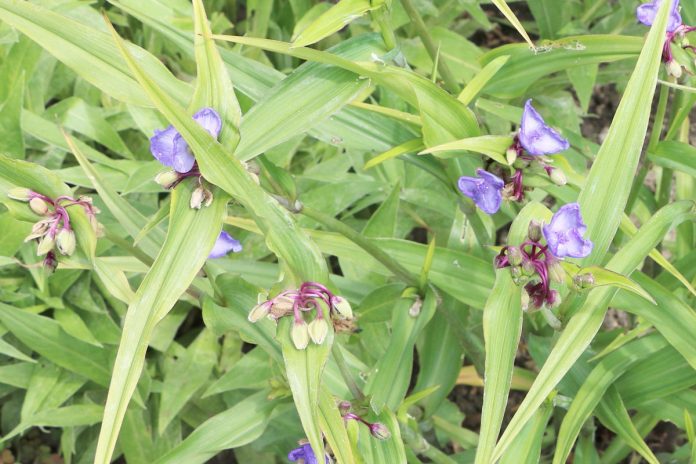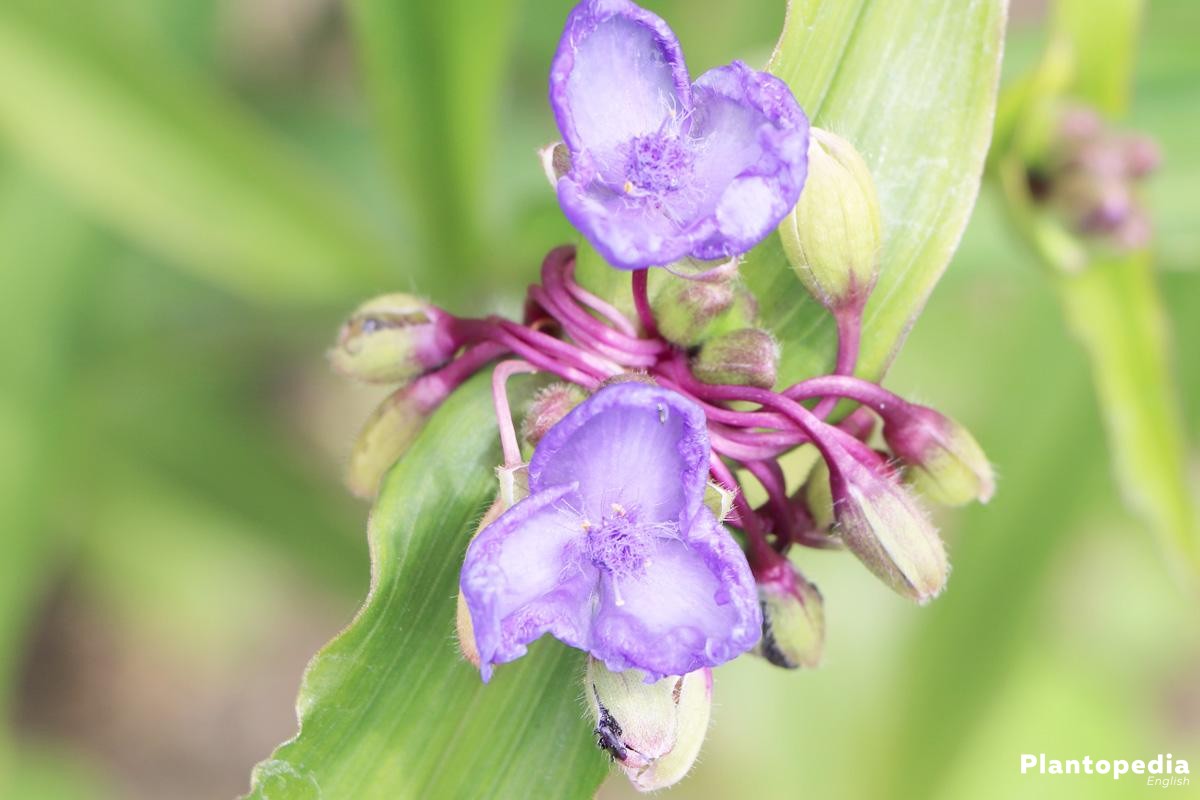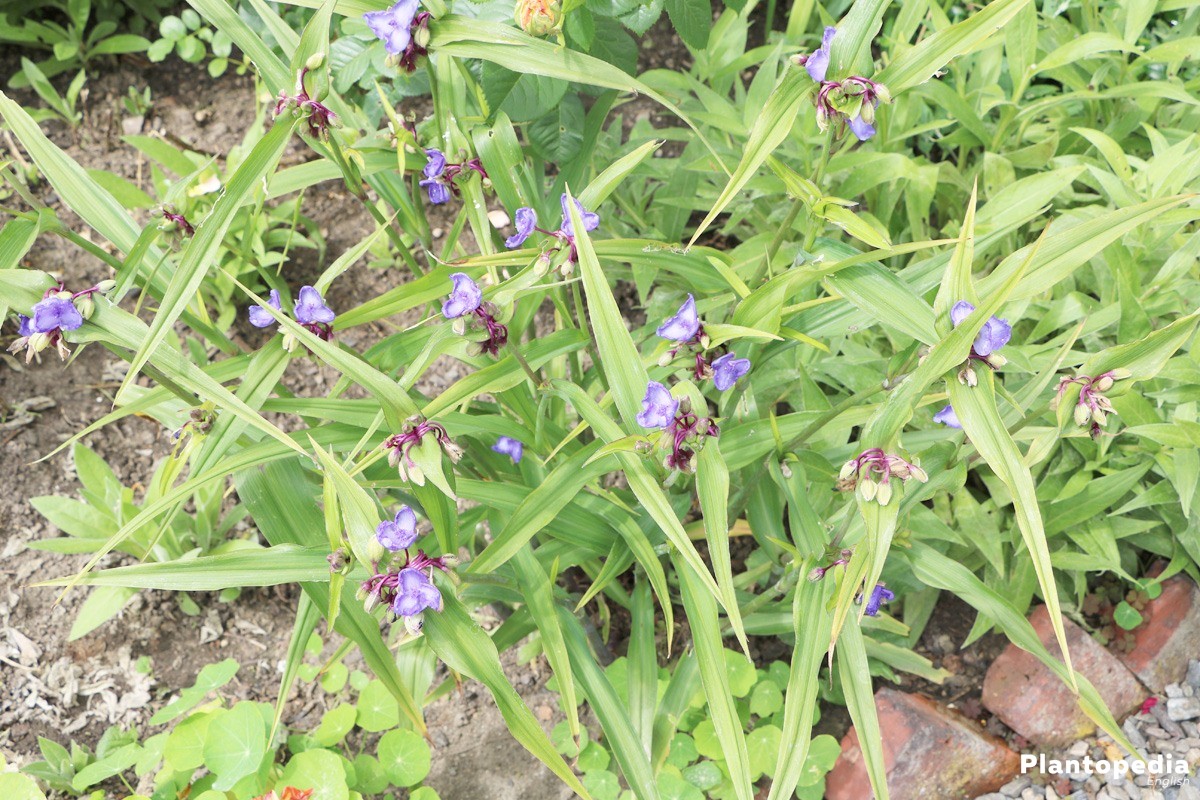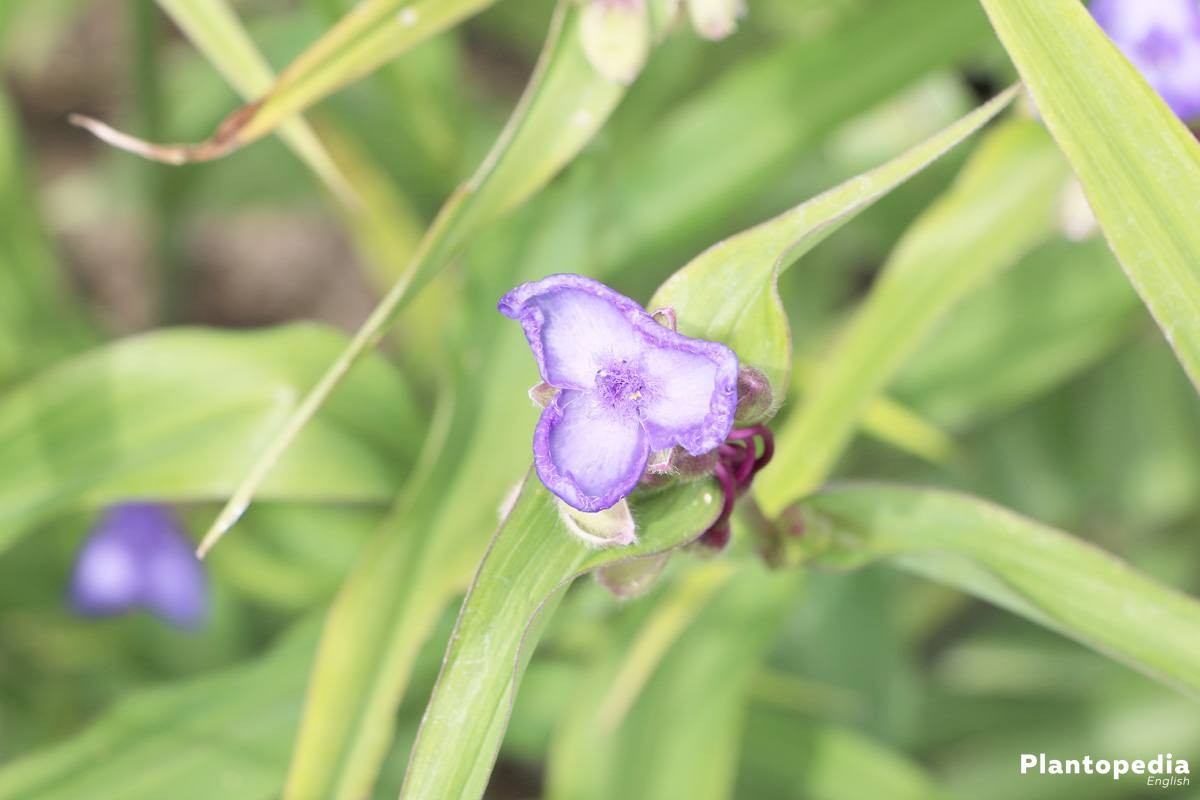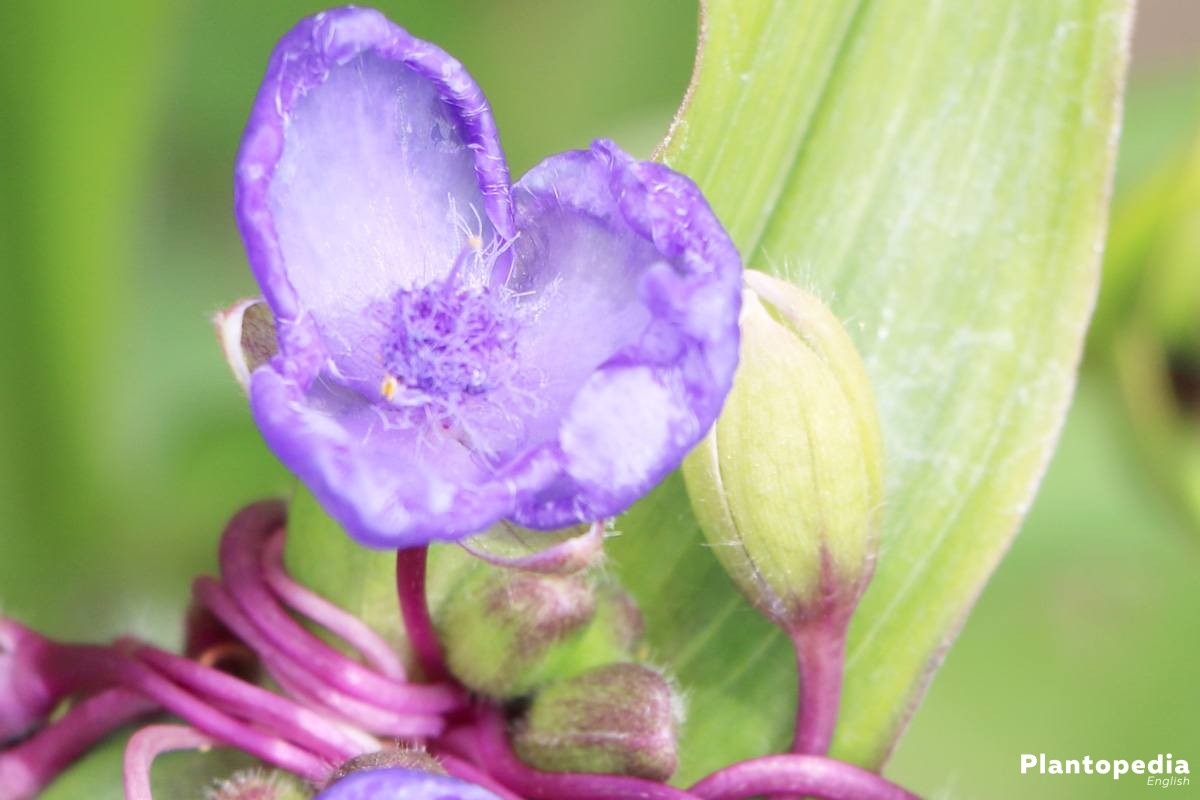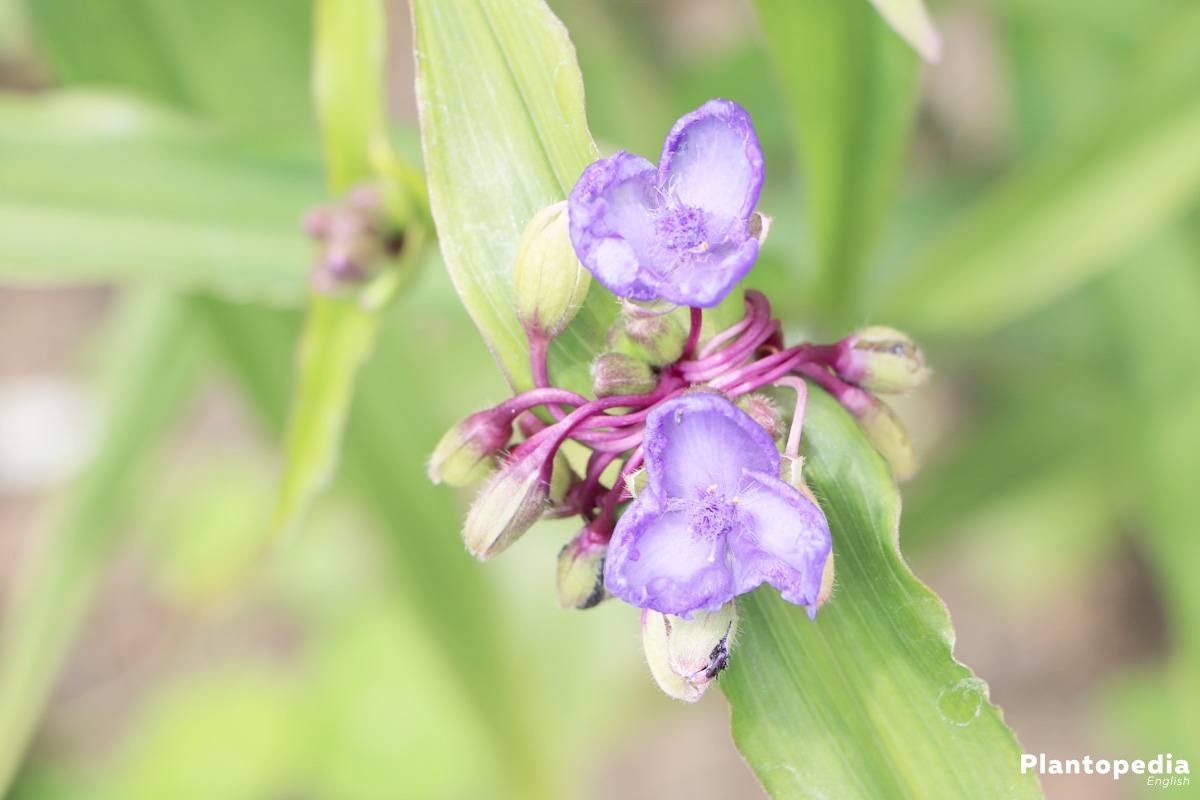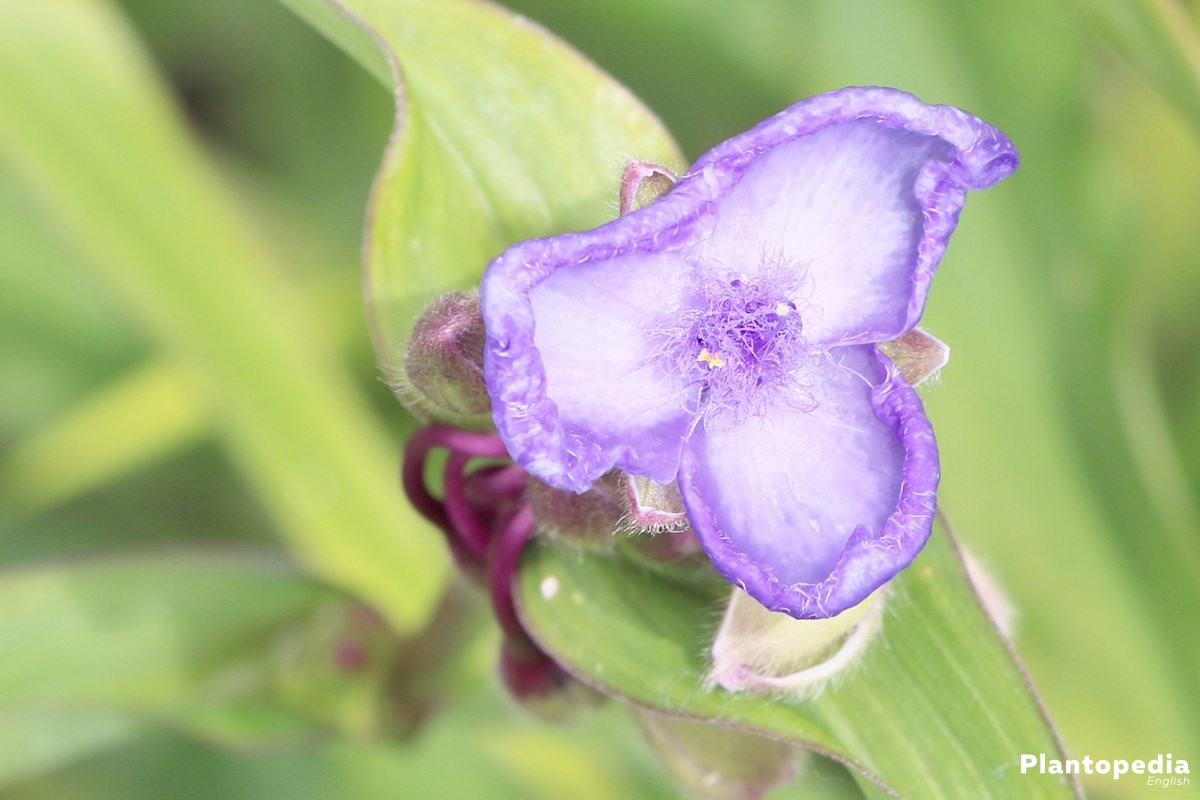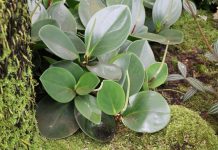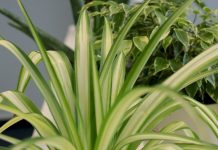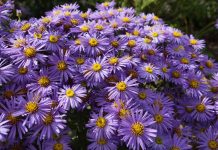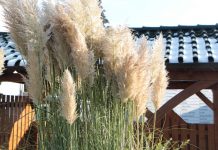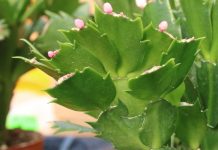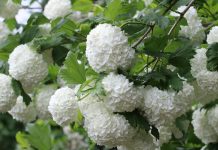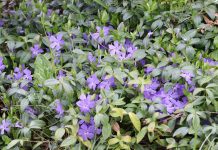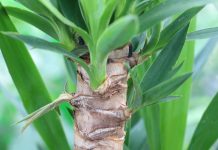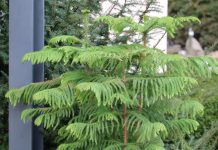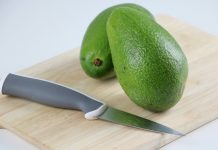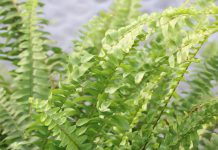These exceptional wild flowers do not only offer something completely different for the garden, they are also easy to cultivate and require little care. We are talking about the tradescantia, also called spiderworts. The three-leaf flowers are usually blue or violet, sometimes also pink and white. Some varieties belong to the indoor plants; others are suitable for being cultivated outside.
Plant Profile
Contents
- Plant family: Commelinaceae
- Genus: Tradescantia
- Trivial names: Spiderworts, spider lily, flowering inch plant
- Origin: South and Central America
- Species: Several dozen worldwide
- perennial, herbaceous plant (some species are succulent)
- Height: 20 to 60 cm
- Flowering period: May to September
- three-leaf flowers in blue, violet, pink or white
- Use: As indoor plant or garden plant (depending on the species)
- deciduous, double-pinnate, opposite leaves
The blossom of the tradescantia opens only for a single day. But due to the large number of blossoms, this is usually not noticed. This naturally pleasant perennial is popular for its decorative leaves, which, depending on the species, hang over like a tuft of grass and the extraordinary shaped, often wonderfully fragrant flowers.
Some gardeners think of indoor plants, when they hear about tradescantia, others think of garden perennials – and both are right. Some varieties are suitable as outdoor plants due to their sufficient frost hardiness; the others love warm locations and are therefore cultivated inside throughout the year.
With different species, tradescantia are exclusively native to the American continent. All representatives of tradescantia are considered unpretentious and bloom for a long time. Spiderworts’ bloom in the widest varieties of colors and have beautiful three-leaf flowers with striking stamens – even though they do not belong to the flowering perennials.
Care
Caring for the tradescantia is very simple. However, it is important, to select the right variety for the right location. There are countless numbers of tradescantia that are not hardy and therefore only suitable as indoor plants. Hardy varieties make the perfect addition to globeflowers and the purple loosestrife near a garden pond or also suitable for the garden bed.
Location
Tradescantia are able to grow at almost every light condition. Only bright sun and full shade makes the adaptable perennials feel uncomfortable. For most outdoor perennials, a half-shaded place with some hours of sunshine in the morning or evening is ideal.
- Outdoor cultivation: off-sun to half-shaded
- Indoor cultivation: bright, without direct midday sun
- Indoor plants require temperatures around 20 degrees Celsius during the whole year
Indoor plants especially prefer very bright light conditions without direct noonday sun. They feel particularly well at an east or west window or also at a south window behind a curtain.
Soil condition
The soil should be rich in humus and nutrients. A good drainage is just as important as the soil condition for storing moisture. The tradescantia prefers a slightly moist soil which does not tend to waterlogging.
- loamy-humous
- rich in nutrients
- slightly acidic to neutral
- good permeability
- moistly-fresh
The spiderworts is best suited for the cultivation in shore areas around garden ponds and creeks or also for planting below bushes where the ground is shaded during the noon, but where there is sufficient sunlight at the rest of the time.
Substrate
If the tradescantia is cultivated inside or in a pot on the balcony or terrace, conventional gardening soil does usually not make the suitable substrate. The plants grow a lot better in a mixture of a variety of organic and mineral components. This way, the plants stay healthier, long-term flowering and are better protected from diseases or a pest infection. Aside from conventional humus gardening soil, the following components should be included.
Peat moss
- rough texture
- light and sterile
- supports aeration
- good at storing moisture
- regulates the soil’s pH
Perlite
- consists of rocks of volcanic origin
- provides good drainage and aeration
- very lightweight
- always has to be mixed with other components
Vermiculite
- as an alternative to perlite
- is more compact than perlite
- keeps water well
- does not offer a good aeration on the other hand
Coarse sand
- improves dewatering
- aerates
- no water storage capacity
As an alternative, Kokohum or coarse pieces of bark can improve the aeration. Good soil is available in the specialist store, but can also be self-made as a mixture of about 60 % of humus-rich flowering soil, 10 % coarse sand or grit, 10 % perlite or vermiculite and 20 % of peat moss.
Planting period
Tradescantia can either be purchased as a plant in the gardening center or it can also be cultivated from seeds. Already pre-cultivated tradescantia are not planted in the bed before the last frost in the middle of May or alternatively, at the end of September to beginning of October.
If you want to cultivate the exceptional tradescantia from seeds by yourself, you should sow them about eight weeks before planting (middle of March). A sowing in spring is also suitable for indoor plants, since the light conditions there are optimal for the growing spiderworts.
Planting in beds
As soon as the temperatures in spring are permanently free from frost, the tradescantia can be planted in the bed or in a pot as well. A good preparation of the soil provides the best conditions for a good growth and rich flowering. For this reason, it makes sense to rake the soil well before planting and remove old roots, weeds and stones.
The plant can directly be planted in humous, well permeable gardening soil. Very sandy soils should be improved by adding a good portion of compost or humous gardening soil. Heavy substrates become more permeable when adding sand or grit.
- planting distance: one half of the plant’s height
- depending on the variety, between 20 and 30 cm
- in the case of heavy soils, add a drainage layer made of gravel or grit
Press the soil slightly and water the tradescantia penetratingly. If tradescantia are watered regularly in the beginning, they will quickly grow new roots. The bushy growing plants are prone to rapid, large-scale growth, which is why initial gaps will close in a short time. In order to prevent the tradescantia from overloading the garden bed after a couple of years, it should be cut off at regular intervals, or a root barrier should be installed right from the beginning.
Planting in pots
All tradescantia can be kept as indoor cultures, but the species that do not tolerate frost and therefore require warm temperatures all the year, are especially predestined. The plants can also spend a couple of days or weeks in a sheltered place outside when the weather is warm. All pots have to be equipped with a drainage hole, so excess water can be released.
The pot is filled with a layer of grit or expanded clay to form a good drainage. You should only use a high-quality substrate or a self-made substrate mixture, in order to provide the plant with the ideal prerequisites for a good start.
Watering
Tradescantia like it a little more moist, but not wet. You should therefore pour your plants regularly, especially those that grow in pots. A quick thumb test can be done to determine whether the substrate is still moist enough.
If the upper soil layer has already dried, the tradescantia needs water. Excess water has to be removed from the saucer after a couple of minutes to prevent waterlogging. Outdoor plants require additional water only when there are longer periods of drought. A layer of mulch protects the soil from drying too fast.
Succulent species such as Tradescantia navicularis or Tradescantia sillamontana are watered somewhat more sparingly, but must not dry out for a longer time either. It is best to pour as soon as the substrate has dried off about halfway through.
Fertilizing
Bedding plants can be supplied with nutrients for the whole season by adding compost in spring. As an alternative, it is also possible to mix the soil with some horn shavings. Potted plants or indoor plants are fertilized with some liquid fertilizer via the pouring water every four weeks during the growth period between April and August.
Trimming
Tradescantia that grow inside, do not need to be cut back. However, the plant tolerates being shortened all the year, in the case that it has grown too high or uneven. But more than a third of the shoot length should not be cut back. If faded plant parts are removed regularly, the tradescantia will flourish persevering and for a long time.
Garden plants, on the other hand, should be radically cut back once a year. As the tradescantia calms in autumn and the leaves wither, all the overground plants can be cut back to about 10 cm above the ground.
However, you should not do this too early, because after the flowering period, the perennial stores nutrients in the root in order to be strong enough to shoot healthily and vigorously the next spring. So wait with cutting back, until the leaves are faded or dried. Also for outside plants, the regular removing of withered flowers provides a large replenishment.
Overwintering
Overwintering the tradescantia is very simple. Indoor plants just have to be watered a little less, since the growth period ends in September. Also, fertilizing is stopped until spring. Garden plants remain where they are and do not require winter protection in sheltered locations, because they can usually easily stand frosts down to -20 degrees Celsius.
Potted plants can either be taken inside to overwinter in the warm from the beginning of September or they can spend the winter in a protected area outside.
- indoor plants: inside during the whole year, just stop fertilizing
- bedded plants: no need of winter protection in sheltered places
- cover all other plants with some brushwood or foliage
- potted plants: place them on polystyrene board, cover the pot with fleece
From the end of March or the beginning or April, depending on the weather, the winter protection can be removed. Tradescantia that have been overwintered inside, get habituated to the outside temperatures and the sun slowly from the beginning of May. When the weather is warm, they are initially left outside during the day, before they may remain outside from mid-March.
Propagating
Tradescantia can be propagated by using scions or seeds. The easiest is to propagate by dividing older perennials.
Dividing
Since the tradescantia shows a strong and fast growth, it should be divided about every three years. This rejuvenation does not only support its willingness to flower, but produces a second plant at the same time.
- time: From spring to autumn
- divide the root ball with a spade
- cut off dead roots and plant parts
- plant both parts immediately
- add some compost
- water well
This method is of the advantage that you receive two plants with the same properties by dividing. A single-origin propagation is often not possible when using self-collected seeds. In addition, the plants already have a pleasant height.
Scions
The spiderworts can be multiplied by using terminal-cuttings all year round. For this purpose, an about 10 cm long, strong shoot is cut off. In the case of outdoor plants, propagation through cuttings is of course only possible during the vegetation period.
- time: all year (preferably in early summer)
- remove the leaves from the lower third
- place 6 to 8 cuttings in one pot
- substrate: peat moss and sand in equal parts
- moisten the substrate slightly
- choose a bright location (without direct sun)
When the rooting has taken place, which is indicated by the bud of new leaves, the scions can be separated. From then, the young plants are treated and cultivated just like adult tradescantia.
Seeds
Mature seeds can be collected and sown. However, in the case of special breeds (hybrids), it is very likely that the seedlings no longer show certain characteristics of the original tradescantia, such as a particular flower color. Pre-cultivation on the window sill takes place about eight weeks before planting, which is in the middle of March.
The seeds from outdoor plants can directly be sown outside either in autumn or in March. Garden tradescantia reliably propagate by themselves through self-seeding, without ever getting invasive and displacing other plants.
- time: Middle of March (outside cultivation and pre-cultivation)
- in the case of outdoor also in autumn
- outdoor: Seeding rows with a distance of about 15 cm
- propagators or indoor greenhouse
- substrate: Cultivation soil
- moisten the substrate and sprinkle the seeds on top
- germ-time: 10 to 20 days
- location: bright without direct sun
Varieties
For tradescantia, you differentiate species that require warm locations all year round (indoor plants) and those that can be planted as perennials in the garden, as they are hardy.
Indoor plants (not hardy)
- Tradescantia blossfeldiana: succulent species
- Tradescantia discolor (purple-leaved tradescantia)
- Tradescantia fluminensis (white-flowered spiderworts, Rio-tradescantia)
- Tradescantia navicularis: succulent variety
- Tradescantia pallida (Red leaf tradescantia)
- Tradescantia sillamontana: Slightly succulent
- Tradescantia zebrina
Garden plants (hardy)
- Tradescantia bracteata
- Tradescantia pilosa
- Tradescantia subaspera
- Tradescantia virginia (Virginian tradescantia)
Diseases
In addition to its ease of care, the tradescantia – whether cultivated inside or outside – has another pleasant characteristic: It almost never gets sick. Once mistakes in plant care such as drought and waterlogging are excluded, tradescantia are almost never being diagnosed with diseases. If the multi-colored varieties lose their color, this is because the plant stands too dark.
Pests
In the case of indoor plants, the usual pests like aphids or mites occur in rare cases. In the initial stage, they can be washed off with lukewarm water.

